Keep it moving! Keep it moving! Almost through the post-drought 2012 logjam!
***Heads up, snake-o-phobes! There is a little snake further down the page, and I am holding it.
I’ve been smooshing two or more hikes into a single post or everything will get completely out of hand.
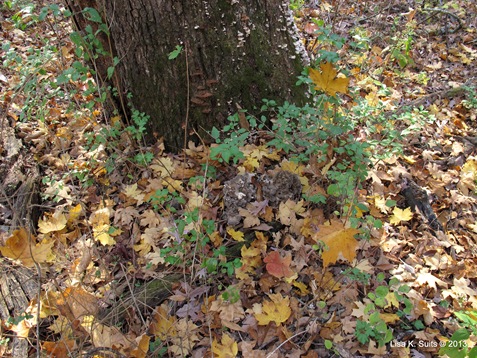
Do you see that nice Grifola frondosa at the base of that tree?
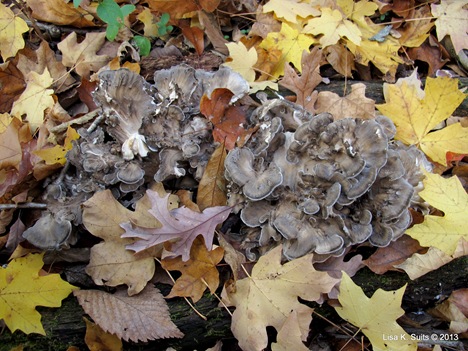
Might not look like much but they are one of my favorites.
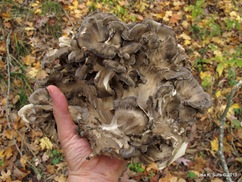 | This is a little demitasse hen, compared to how big they can get. |
Do you see that nice Hericium erinaceus on that log? Dead center.
![[lion%2527s%2520mane%2520distant%255B7%255D.jpg]](https://lh4.ggpht.com/-9X-6SclOL2M/UdDTm1OYRkI/AAAAAAAAHR4/3M_5prIMeoc/s1600/lion%252527s%252520mane%252520distant%25255B7%25255D.jpg)
Might look like some kind of shaggy mess, but they are one of my favorites.
 | This one is also a little on the small side, and not at optimum pure white sweetness. Pretty sure I took the big one and trimmed yellow off. Not a perfect workaround, but I bet I ate it happily. |
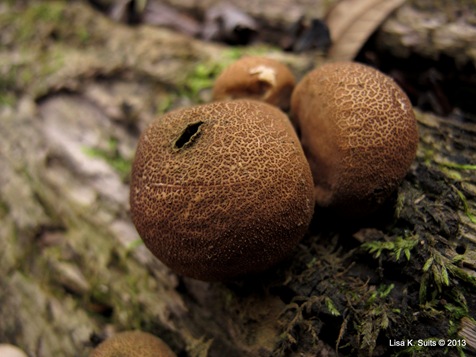 |
| An aged Lycoperdon pyriforme, pear-shaped puffball. The hole is where spores come out. |
![[Red%2520Russula%2520three%2520in%2520leaves%255B6%255D.jpg]](https://lh5.ggpht.com/-ocoPUHkKPOw/UdDUAYNHHjI/AAAAAAAAHTI/KSN4sLQydDs/s1600/Red%252520Russula%252520three%252520in%252520leaves%25255B6%25255D.jpg)
Lovely red Russulas amongst the leaves.
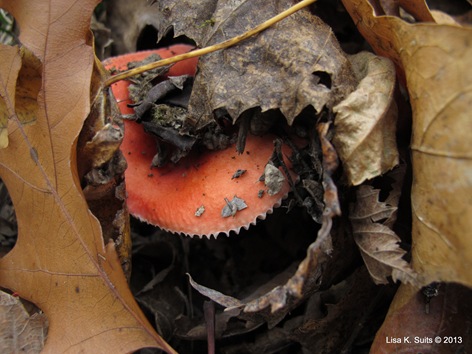
They are quite common in the woods here, but I like them every single time. They can be so red!
This is turning into The Summer of No Specific Epithets! Science is overtaking the field guides and it’s turning out that many fungi we amateurs (read: “me”) were slapping a complete Latin name on (with some confidence) are actually not what we thought they were, indistinguishable from similar species without a microscope or DNA tests, or it turns out they were named after similar specimens from other countries, and the N.A. ones are genetically distinct. So I would probably have called this Russula emetica, but now I really can’t say what species it is. There are many red Russulas. It’s a red Russula.
![[Red%2520Russula%2520cap%2520and%2520gills%255B7%255D.jpg]](https://lh6.ggpht.com/-xZw2VcvR_Pk/UdDUIzU69bI/AAAAAAAAHTo/hMnpH6Gq4oI/s1600/Red%252520Russula%252520cap%252520and%252520gills%25255B7%25255D.jpg)
It is beautiful. End of discussion.
Here comes the snake--I posted it small so the snake-fearers can bleep past it. Click to view large.
It’s the best of a bad lot of pics, it was dusk and way too dark for normal camera function! Had to use some “low light” setting (the flash pics were hideous) and resolution suffered. But I have to include it, because I’d been wanting to find one of these for at least two years, when I first learned of them, and I was so excited! It’s a rough green snake, Opheodrys aestivus.
It was so slender, about the thickness of a pencil, but easily two feet long! I was afraid of holding it too tightly so I’m trying to just barely hang on with that awkward hand position. See its tail looped twice around my arm? I actually had a little trouble convincing it to get off me.
They are benign and eat crickets and other insects and hunt exclusively by sight. I very much hope to see one again. And not that I hope to see this, but they fade to blue when they die.
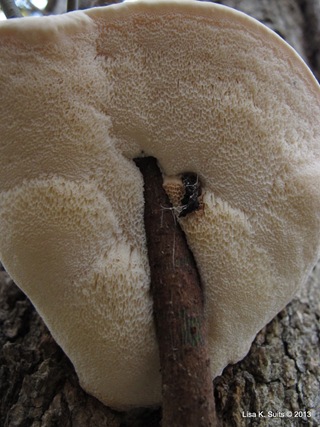
Above: Spongipellus unicolor, the one Michael Kuo calls “a big, doinky doofus”.
![[Spongipellis%2520unicolor%2520side%2520view%255B6%255D.jpg]](https://lh3.ggpht.com/-UHk_fLkFp8Y/UdDURmGIzyI/AAAAAAAAHUY/B4aPy-dgm1Q/s1600/Spongipellis%252520unicolor%252520side%252520view%25255B6%25255D.jpg)
They grow on oaks (mostly). They’re parasitic. That’s about all I could rustle up on them.
|
Tremella foliacea, which I thought was just an extra-frilly wood ear (Auricularia auricula) for quite a while. But these are much thinner, and grow in clusters like this. |
I was here.
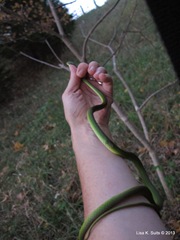
![[wood%2520ear%2520frilly%255B29%255D.jpg]](https://lh5.ggpht.com/-cDmXiUDUhZA/UdDUV965HGI/AAAAAAAAHUo/ZPzRMNKyfEw/s1600/wood%252520ear%252520frilly%25255B29%25255D.jpg)
No comments:
Post a Comment